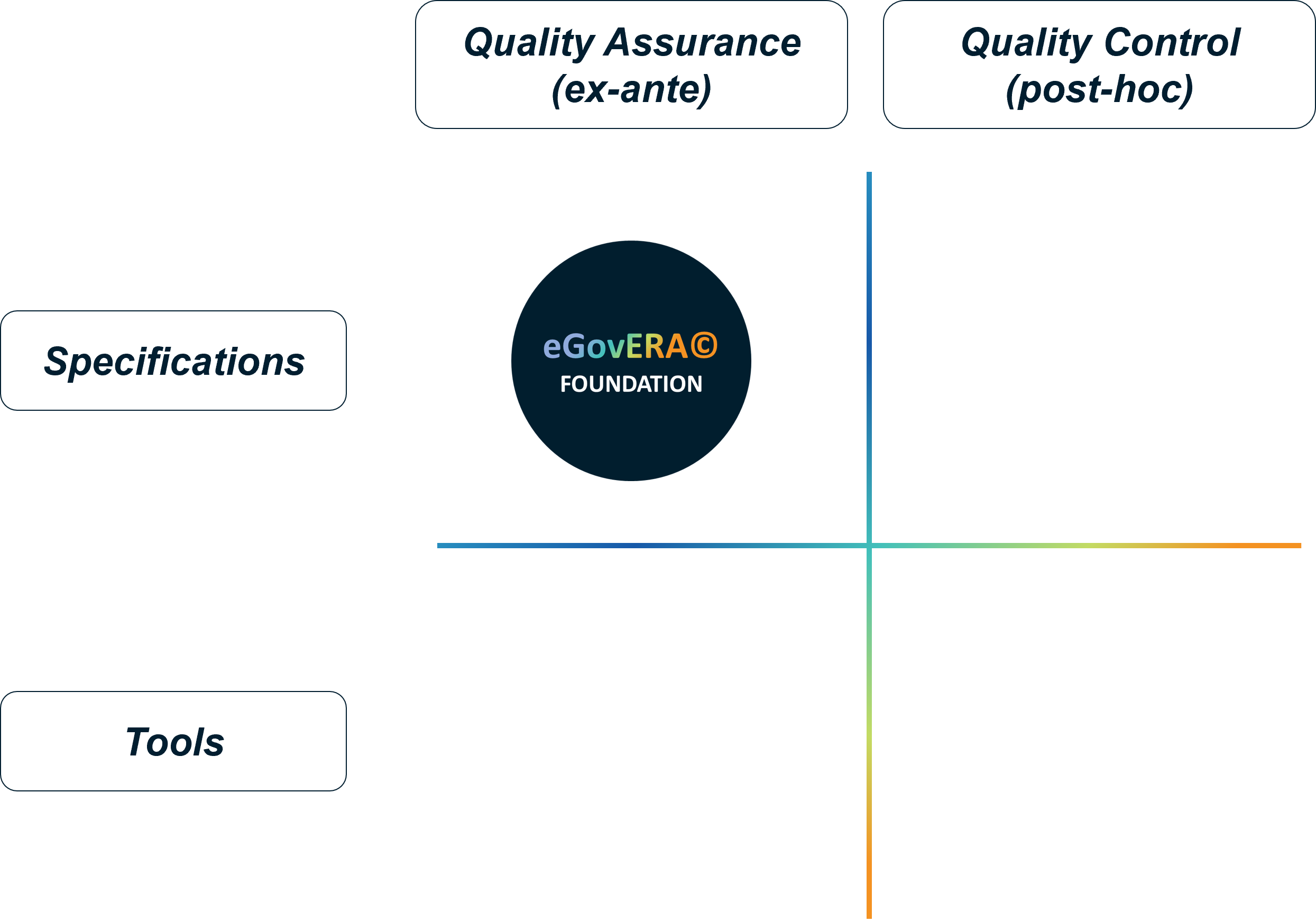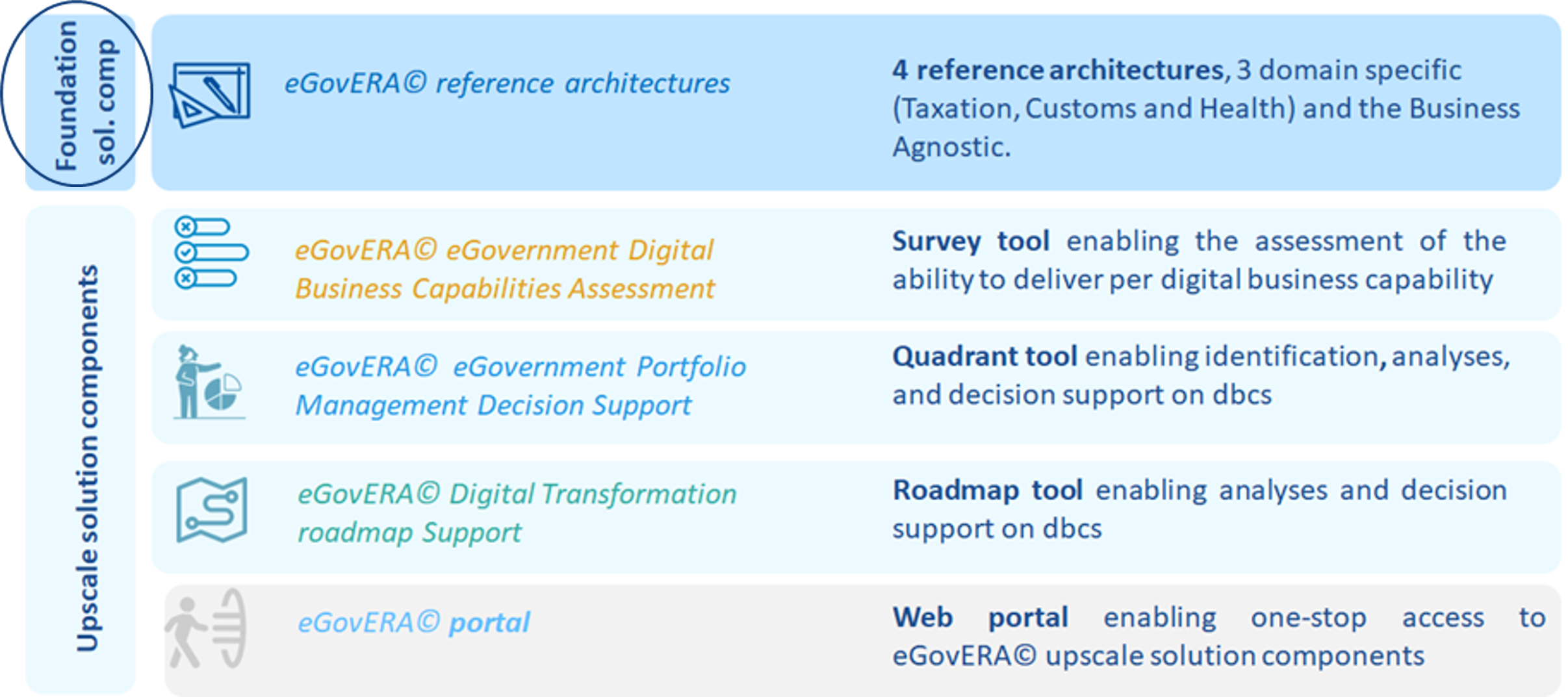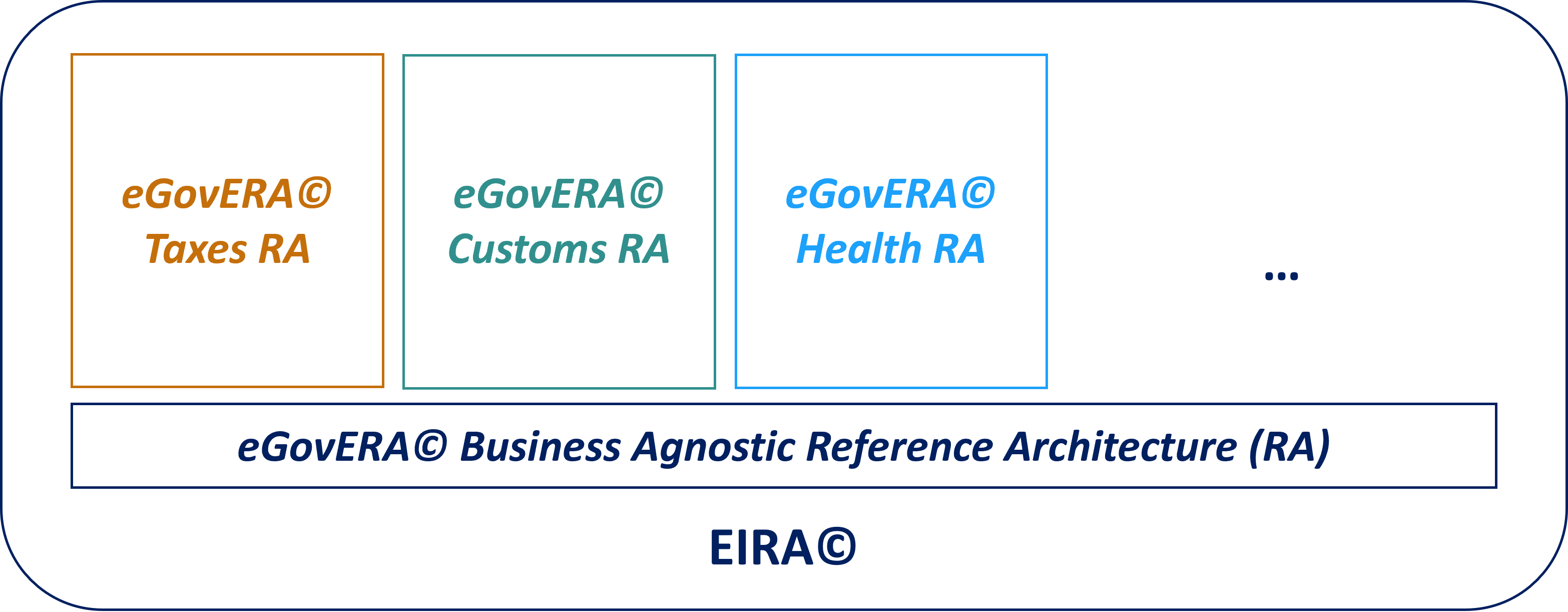What is the eGovERA© Business Agnostic Reference Architecture?
A reference architecture is a blueprint/template that provides a recommended framework for designing and implementing systems.
The eGovERA© Business Agnostic Reference Architecture is part of the eGovERA© Foundation, a suite of quality assurance specifications that are directly based on EIRA© and provide additional and more granular reference architectures to analyse and design Digital Public Services.
The latest release of the eGovERA© Business Agnostic Reference Architecture is the v6.1.0.

Together with the EIRA©, the eGovERA© is a key element within the Interoperability Architecture portfolio to support the interoperability of Digital Public Services across the European Union.
eGovERA© stands for eGovernment European Reference Architecture. It is a set of specifications (i.e., eGovERA© Foundation) and tools (e.g., eGovERA© Upscale) directly based on the EIRA©, which aim to help Public Administrations across Europe with additional and more granular reference architectures and tools to analyse and design Digital Public Services. With eGovERA©, Public Administrations have the guidance they need to create seamless, integrated services in line with EU-wide interoperability standards.
The main purpose of the eGovERA© is to provide a structured approach that helps European Public Administrations ensure that their Digital Services are interoperable, meaning they can easily exchange data across borders and sectors. To this end, eGovERA© Foundation provides additional granularity to EIRA© defining the most salient Architectural Building Blocks (ABBs) needed to build European interoperable solutions supporting public services in business agnostic and specific (i.e., Health, Customs, Taxes) domains.


For what? You are working on the...
- Analysis of Requirements of an Interoperable Solution (Digital Public Service incl.) use case
- Design of a Solution for Target Interoperable Solution (Digital Public Service incl.) use case

For whom? You are a...
- Business analyst
- Enterprise architect
- Solution architect working in the implementation of digital public services in a specific policy domain or in cross-domain infrastructure services.
eGovERA© Foundation's value proposition
Check eGovERA© Foundation's value proposition detailing how this quality assurance specification brings value to different use cases for support to Digital Public Services and target profiles.

